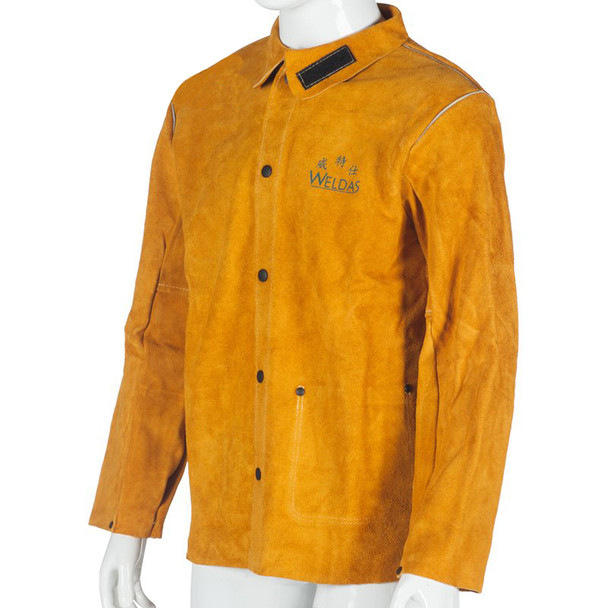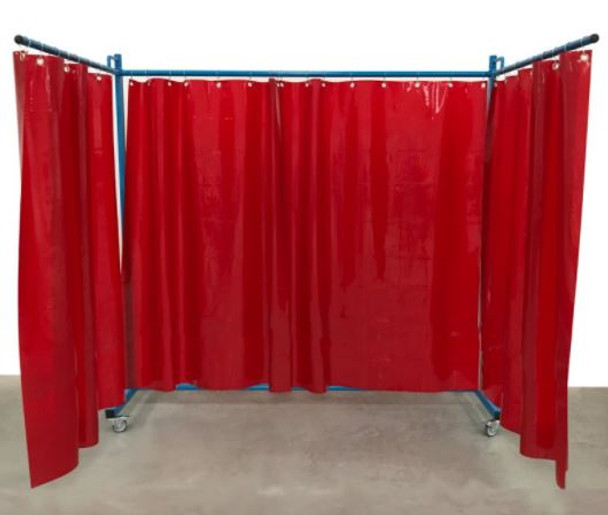Top 10 Safety Protocols Every Welder Must Follow
Welding is a vital process in many industries, but it involves significant hazards that can pose risks to health and safety. Understanding and implementing rigorous safety protocols is not only a responsibility, it's an essential part of every welder's daily routine. These measures help prevent accidents, reduce injury risks, and ensure a safer workplace for everyone involved. Welders face various dangers including burns from hot metal and sparks, eye damage from ultraviolet and infrared rays emitted during welding, respiratory issues from inhaling fumes and gases, and risks of electric shock. Each hazard requires specific precautions to protect the health and safety of welders.
 INGCO Auto Darkening Welding Helmet AHM008
INGCO Auto Darkening Welding Helmet AHM008
Some of the safety protocol for every welder is to always wear proper flame retardant protection because exposed skin can get burned "like sunburn" from arc, tig, mig welding flash. It is also advisable to wear eye protection and face shield. In this content we will discuss in details the top 10 safety protocol every welder needs to adhere to improve their safety on jobsite.
Learn more:12 essential welding equipment for fabrication work
Comprehensive Safety Protocols for every welder
1. Proper Personal Protective Equipment (PPE)
Essential PPE for welders includes:
- Welding Helmets: Protect against eye damage from sparks and radiation.
- Gloves: Shield hands from burns and electric shocks.
- Fire-resistant Aprons: Cover and protect against sparks and heat.
- Safety Glasses: Offer additional eye protection under the helmet.
- Purpose: Each piece of PPE is designed to provide a specific type of protection, collectively ensuring a welder’s safety from the most common physical hazards encountered during welding tasks.
2. Ventilation and Fume Extraction
Adequate ventilation and the use of fume extraction systems are crucial in any welding environment. These systems help to remove harmful welding fumes and gases from the workspace, which are hazardous to health when inhaled.
- Purpose: Proper ventilation ensures that toxic substances are effectively removed from the air, reducing the risk of respiratory problems and other health issues related to air quality.
3. Fire Safety Measures
Welding can easily ignite flammable materials due to sparks and hot equipment. It is essential to keep the welding area clear of all flammable materials, including oils, solvents, and combustible debris.
Purpose: Implementing strict fire safety protocols helps prevent fires, protecting both personnel and facilities. Fire fighting equipment like extinguishers should be readily available, and all staff must know how to use them effectively.
 Welders welding Jacket Leather
Welders welding Jacket Leather
4. Electrical Safety Practices
Welding equipment should be properly grounded, and all electrical connections must be secure to prevent shocks. Regular inspections of equipment for damaged cords and improper connections are mandatory.
- Purpose: These precautions are necessary to prevent electrical accidents, which can be severe and potentially fatal.
5. Regular Equipment Inspection and Maintenance
Consistent inspection and maintenance of welding equipment are critical to ensuring safety and functionality. This includes checking welding machines, cables, and torches for wear and tear, ensuring that all components are in good working condition.
- Purpose: Preventative maintenance not only helps in avoiding mechanical failures that can lead to accidents but also ensures optimal performance of welding equipment, contributing to safer and more efficient welding operations.
6. Proper Training and Certification
Welding requires specific skills that can significantly impact the quality and safety of the work. Training programs and certifications ensure that welders have the necessary knowledge and skills to perform their tasks safely and effectively.
- Purpose: Certified training programs teach welders the best practices in safety and welding techniques, significantly reducing the risk of accidents due to operator error. Certification also often includes up-to-date education on the latest safety standards and technology in the welding industry.
7. Safe Handling of Gases and Chemicals
Many welding processes involve gases that can be hazardous if not handled correctly. Safe storage, handling, and usage practices must be strictly followed to prevent leaks, explosions, and health hazards.
- Purpose: Proper procedures in managing gases and chemicals prevent dangerous exposures and ensure that the work environment remains safe for all personnel. This includes having appropriate gas detectors and ventilation systems in place.
 Hellog welding Heat/Fire Resistant Gloves
Hellog welding Heat/Fire Resistant Gloves
8. Use of Work Area Barriers and Signs
Implementing physical barriers and clear signage around welding areas helps to alert other workers and visitors to the potential dangers and restricts access to authorized personnel only.
- Purpose: Barriers and signs serve as preventive measures to protect non-welders from accidental exposure to sparks, UV radiation, and other hazards associated with active welding sites.
9. Emergency Preparedness and Response Training
Beyond preventive safety measures, welders and all workshop personnel should be trained in emergency response protocols. This includes knowing how to handle welding accidents, such as burns or exposures to toxic fumes.
- Purpose: Effective emergency response training ensures that all employees are prepared to act quickly and efficiently in case of an accident, which can minimize injuries and potentially save lives.
This section has continued detailing essential safety protocols that form the backbone of a secure welding operation, focusing on equipment maintenance, proper handling of hazardous materials, and emergency preparedness. Next, we will discuss the importance of complying with safety regulations and explore the future trends in welding safety.
10. Compliance with Local Safety Regulations
Staying informed about and compliant with local and national safety regulations is critical for any welding operation. This includes following guidelines set by occupational safety and health administrations and other relevant authorities.
- Purpose: Compliance ensures that welding operations meet legal standards, which helps protect businesses from legal liabilities and fines, and more importantly, ensures a safe working environment for all employees.
Additional Resources
A. Further Reading
For those interested in deepening their knowledge of welding safety, resources such as the American Welding Society (AWS) website and safety publications can provide valuable information and updates.
B. Industry Associations and Networks
Joining professional welding associations like the Nigerian Institute of Welding (NIW) or the American Welding Society (AWS) can offer access to workshops, training seminars, and networking opportunities that enhance professional development and safety awareness.
Frequently Asked Questions
1. What is the most important safety gear for a welder?
The most critical safety gear includes a welding helmet with proper shade, fire-resistant gloves, aprons, and safety boots to protect against sparks, heat, and radiation.
2. How often should welding equipment be inspected?
Welding equipment should be inspected before each use to ensure it is in safe working condition, with more thorough maintenance checks scheduled monthly or as per the manufacturer's guidelines.
3. What are the common signs of inadequate ventilation in a welding area?
Common signs include visible fumes, unusual odors, and workers experiencing headaches or dizziness, which indicate poor air quality and insufficient fume extraction.
4. Is certification mandatory for welders?
While not always legally mandatory, certification is highly recommended as it verifies a welder’s ability to safely and effectively perform welding tasks according to industry standards.
5. Where can I find quality welding supplies and safety equipment?
For top-quality welding supplies and safety equipment, visit Tikweld Supplies. We offer a wide range of products that meet the highest standards of safety and efficiency.
By adhering to these safety protocols and continuously engaging in learning and development, welders can significantly reduce the risks associated with their profession and enhance the quality of their work.
Related Article:
Welding and fabrication price list in Nigeria..
Welding and fabrication work in Lagos, Welders near me
Welding and fabrication services in Abuja
Conclusion
This guide has provided a comprehensive overview of the top 10 safety protocols every welder must follow, covering everything from personal protective equipment to emergency preparedness and regulatory compliance. These measures are essential not only for the safety of individual welders but also for the overall operational integrity of welding projects.
Safety in welding is an ongoing commitment. Advances in technology and changes in safety standards necessitate continual learning and adaptation. Welders and managers are encouraged to stay updated with the latest safety practices and innovations in welding technology.










